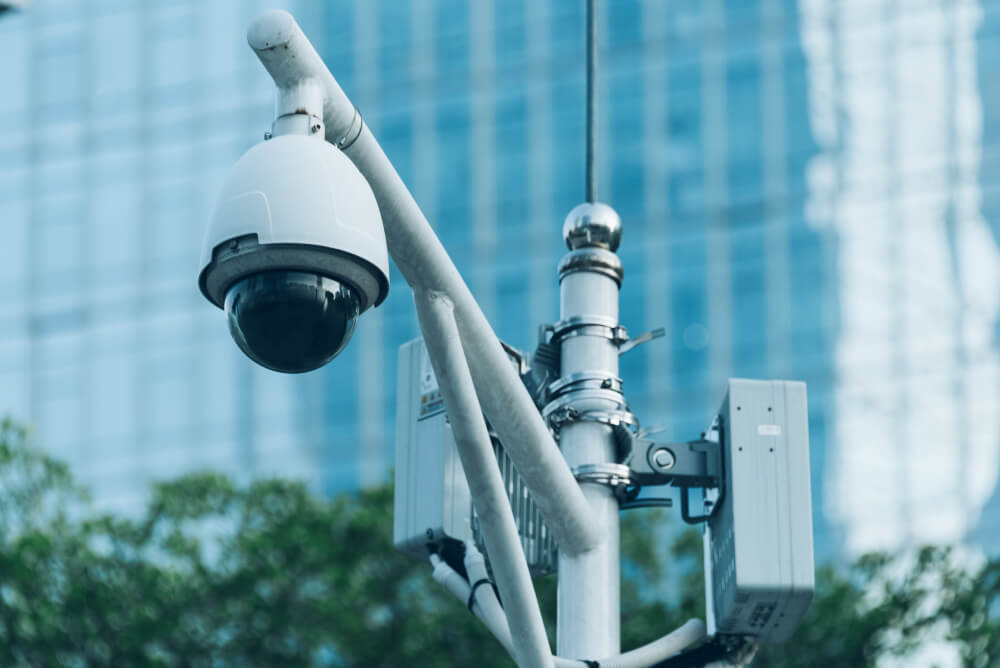To implement a GovComm Wrong Way Detection Vehicle System, the first step involves evaluating roadway needs and pinpointing high-risk areas using advanced tools like GIS technology.
At GovComm, we are pioneers in AI-powered solutions for safer roads, and our flagship product, the Wrong-Way Vehicle Detection System (WWVDS), is designed to tackle the alarming crisis of wrong-way driving, which tragically claims hundreds of lives each year.
Next, securing funding and necessary approvals is essential. This often involves detailed grant applications that highlight safety needs and statistics, such as the 34% increase in wrong-way driving deaths.
By collaborating with GovComm, transportation leaders can effectively address these critical issues and leverage our proven technology.
Following approval, the installation of detection systems occurs at strategic locations, along with training local enforcement to respond effectively.
GovComm’s WWVDS stands out with unmatched accuracy and rapid response capabilities, ensuring that law enforcement is equipped with life-saving information.
By integrating our proprietary Detection Optimizer™, we eliminate false alerts, allowing for genuine and actionable notifications.
Continuous data analysis and community engagement enhance the system’s effectiveness, ensuring ongoing improvements and adaptations.
GovComm is committed to operational excellence, with all ITS equipment manufactured under an ISO 9001-certified quality management system.
We invite you to explore how GovComm can transform road safety in your community.
Together, we can drive towards Vision Zero—a future where traffic fatalities and injuries are eliminated.
For more information on our revolutionary technology and to see how we can collaborate, visit our website or contact us today!
Let’s make our roads safer together!
Key Takeaways
- Assess existing infrastructure and review accident data to identify high-risk areas for the Wrong-Way Vehicle Detection System (WWVDS) implementation.
- Secure funding through grant applications and stakeholder collaboration, emphasizing road safety and reducing fatalities.
- Conduct site assessments to determine strategic locations for WWVDS installations, particularly at exit ramps and high-traffic areas.
- Train local enforcement agencies on responding to WWVDS alerts, focusing on real-time simulations and timely responses to incidents.
- Implement continuous monitoring and maintenance of the system, analyzing collected data to evaluate performance and inform necessary improvements.
Assessing Roadway Needs
Evaluating roadway needs is crucial for enhancing safety and preventing wrong-way driving incidents. To achieve this, authorities must undertake a thorough evaluation of existing roadway infrastructure, focusing on critical components like signage, markings, and visibility. These elements greatly influence driver behavior and awareness.
By carefully reviewing accident data, especially concerning locations with a history of head-on collisions, authorities can pinpoint areas that are particularly vulnerable to wrong-way driving incidents.
Engaging with local traffic management authorities is essential for gathering insights that inform the evaluation process. This collaboration helps tailor the implementation of the GovComm Wrong Way Vehicle Detection System (WWVDS) to specific regional needs.
Additionally, utilizing Geographic Information System (GIS) technology allows for effective mapping of crucial locations, ensuring that the detection systems are deployed in areas where they can provide maximum coverage and response times.
Moreover, it’s imperative to collaborate with state transportation agencies to establish selection criteria for test sites. This selection process should consider factors like traffic volume, roadway design, and historical wrong-way driving statistics.
Identifying High-Risk Areas
After evaluating roadway needs, the next step involves pinpointing high-risk areas prone to wrong-way driving. Identifying these locations requires a thorough analysis of traffic accident data, particularly focusing on the alarming 34% increase in wrong-way driving deaths from 2015 to 2018.
Key factors include the frequency of wrong-way incidents, high-speed roadways, and areas where driver impairment or inexperience is common, all of which contribute to disproportionately high fatality rates.
Utilizing existing traffic management systems can greatly aid in this identification process. By gathering real-time data, officials can discern patterns and trends, thereby determining which exit ramps and interchanges require immediate attention.
Collaboration with local law enforcement and transportation departments enhances this process; their insights into frequently reported problems can provide critical context and help validate data findings.
Another essential aspect involves evaluating signage effectiveness in suspected high-risk areas. Assessing the visibility and clarity of road markings and electronic messaging is crucial, as improved signage can have a direct impact on preventing wrong-way driving incidents.
For instance, placing additional warning signs or redesigning confusing intersections can deter drivers from making dangerous mistakes.
Securing Funding and Approvals
Securing funding for the GovComm Wrong-Way Vehicle Detection System (WWVDS) typically involves applying for state or federal grants dedicated to improving road safety and reducing traffic fatalities. Agencies must craft detailed proposals that highlight the need for the system, presenting statistics on wrong-way driving incidents and their associated costs to justify funding requests. This thorough approach not only demonstrates the project’s significance but also helps in communicating its potential impact on traffic safety.
Collaborating with stakeholders like state transportation departments and local governments can greatly strengthen funding applications. By showing unified regional support and shared responsibility for traffic safety, agencies can enhance their chances of approval.
Additionally, the approval process often requires assessments of project feasibility, budget allocations, and compliance with local and state regulations. This guarantees that the proposed system aligns with existing transportation goals and standards.
Once the proposals are submitted, agencies must wait for feedback from the relevant authorities, which can include requests for additional information or modifications to the initial plans. It’s essential to anticipate these needs and respond promptly, as delays can jeopardize funding opportunities.
Ultimately, securing funding and approvals is an imperative step in the implementation of the WWVDS. Once these are in place, agencies can proceed to the next steps, which include selecting installation sites and coordinating deployment, furthering their commitment to enhancing road safety and reducing the risks associated with wrong-way driving.
Installation of Detection Systems
How can agencies guarantee the effective installation of GovComm’s Wrong-Way Vehicle Detection Systems (WWVDS)? The process begins with thorough site assessments to pinpoint strategic locations, such as highway exit ramps, where wrong-way driving incidents are most prevalent.
These assessments help agencies determine the best spots for the installation of detection systems, making sure they’re positioned for maximum impact.
Once the sites are selected, the installation process involves integrating the WWVDS with existing traffic management infrastructure. This integration allows for real-time notifications to traffic management centers and law enforcement, enhancing their ability to respond promptly to wrong-way driving events.
The systems utilize advanced radar technology to detect vehicles entering highways in the wrong direction, triggering flashing warning signs to alert drivers immediately.
Proper calibration of these systems is vital for achieving accurate detection and minimizing false alerts. If the calibration is off, it may lead to ineffective responses, undermining the system’s reliability.
In Florida, initial deployments have been made at eight interchanges along I-4, with future expansions planned to bolster roadway safety.
After installation, ongoing monitoring and maintenance are essential to guarantee the detection systems function effectively. Continuous evaluation of the data collected can inform agencies about the effectiveness of the systems and guide further enhancements to road infrastructure.
Training for Local Enforcement
Thorough training for local enforcement agencies is imperative for the effective operation of the Wrong-Way Vehicle Detection System (WWVDS). This training guarantees that officers are well-prepared to respond to the alerts generated by the technology, which plays a significant role in enhancing road safety.
During extensive training sessions, local enforcement personnel learn the functionality of the WWVDS, including how to interpret various alerts and the appropriate responses when encountering wrong-way drivers.
Real-time simulations form a key part of this training, allowing officers to practice responding to alerts in a controlled environment. These scenarios help familiarize them with the types of alerts that may be received and the best practices for communicating with traffic management centers. The training emphasizes the importance of a timely response, which can greatly reduce the likelihood of high-speed collisions and other dangerous incidents on the road.
Furthermore, ongoing training and refresher courses are essential for keeping local enforcement updated on advancements in detection technology and procedural changes. As technology evolves, so too must the skills of the enforcement agencies tasked with safeguarding public safety.
Continuous Monitoring and Maintenance
Ensuring the GovComm Wrong-Way Vehicle Detection System (WWVDS) operates at peak efficiency relies on continuous monitoring and maintenance. This proactive approach allows for the quick identification of any operational issues that may arise, ensuring the system remains reliable over time.
Regular maintenance schedules are essential, as they align with industry standards to inspect and service the system, thereby mitigating potential disruptions in functionality.
Key aspects of continuous monitoring and maintenance include:
- Routine inspections to evaluate the system’s performance and identify any needed repairs.
- Feedback incorporation from traffic management centers and law enforcement to enhance operational efficiency.
- Adaptation to environmental changes, ensuring the system withstands harsh weather conditions while remaining fully operational.
- Data analysis to evaluate system reliability and effectiveness, allowing for adjustments that improve accuracy and detection performance.
Analyzing Collected Data
Continuous monitoring and maintenance set the stage for effective data analysis in the Wrong-Way Vehicle Detection System (WWVDS). This process begins with the collection of data at high frame rates, allowing for a detailed examination of vehicle movements and directions. By evaluating detection accuracy and response times, stakeholders can guarantee that the system operates effectively in real-time conditions. The importance of accurate data can’t be overstated, as it directly impacts the system’s reliability.
The WWVDS employs advanced detection algorithms designed to filter out false alerts, which can otherwise compromise the quality of data analysis. By minimizing these inaccuracies, the system enhances overall detection reliability, providing more precise information for decision-making. The collected data is invaluable for generating reports that traffic management centers can use to evaluate system performance, enabling them to identify trends in wrong-way driving incidents and develop targeted responses.
Furthermore, continuous monitoring of this data allows for ongoing refinements to the detection algorithms, making sure that the system evolves to meet emerging challenges. These refinements can lead to improved detection accuracy, ultimately reducing incidents of wrong-way driving and enhancing roadway safety.
Enhancing Road Infrastructure
Improving road infrastructure is vital for reducing wrong-way driving incidents and enhancing overall safety. By focusing on key elements, transportation authorities can create a safer environment for all drivers. Increased awareness and proper signage are essential components in this effort.
- Installing additional wrong-way signage at exit ramps improves driver awareness and helps prevent wrong-way incidents.
- Enhancing visibility through the installation of roadway reflectors and improved pavement markings aids in driver recognition of the correct road usage.
- Utilizing electronic messaging boards provides real-time alerts to warn motorists of potential wrong-way drivers, greatly enhancing safety.
- Conducting ongoing evaluations and upgrades to signage effectiveness guarantees that implemented measures are achieving their intended safety outcomes.
In specific locations, such as interchanges on I-4, Wrong Way Vehicle Detection Systems (WWVDS) have been installed to further support the goal of reducing wrong-way driving incidents. These systems not only detect wrong-way vehicles but also alert law enforcement, allowing for a quicker response.
Moreover, enhancing road infrastructure is a continuous process that involves regular monitoring and maintenance of these safety measures. By collecting data on incidents and analyzing its effectiveness, transportation authorities can make informed decisions on future upgrades.
With the integration of wrong way detection systems and strategically placed electronic messaging boards, driver awareness can be greatly increased, leading to improved safety outcomes on the roads.
Community Engagement Strategies
Community engagement plays an essential role in the successful implementation of the Wrong-Way Vehicle Detection System (WWVDS). By involving the community early in the process, stakeholders can foster trust and transparency, ensuring residents understand the system’s purpose and benefits.
To achieve this, hosting informational sessions and workshops is imperative. These gatherings can educate the public about alarming statistics, such as the 34% increase in deaths from wrong-way driving between 2015 and 2018, thereby raising awareness and encouraging support.
Utilizing social media platforms and local news outlets to share regular updates on the project is another effective strategy. By informing the community about installation timelines and expected outcomes, residents remain engaged and informed.
Collaboration with local law enforcement and transportation agencies further enhances community engagement, as it allows for the gathering of feedback from residents. Addressing their concerns and incorporating their insights into the implementation plan will create a sense of ownership among community members.
Moreover, establishing a feedback loop post-installation is essential. This mechanism enables residents to report issues or suggest improvements, promoting continuous engagement and enhancing system effectiveness.
Future Developments and Innovations
Numerous advancements are on the horizon for GovComm’s Wrong-Way Vehicle Detection System (WWVDS), driven by a commitment to leverage cutting-edge technology. The integration of AI and machine learning is set to considerably enhance detection accuracy while reducing false alarms, guaranteeing a more reliable system for traffic safety.
Future developments will focus on seamless integration with existing traffic management infrastructures, allowing for streamlined operations and improved real-time response capabilities.
Key innovations on the radar include:
- Refinement of Detection Optimizer™ technology to achieve higher detection accuracy and quicker notification times for wrong-way incidents.
- Expansion of applications beyond wrong-way driving, addressing other critical traffic safety challenges such as pedestrian crossings and high-accident intersections.
- Collaboration with state transportation departments to guarantee ongoing evaluation and refinement of the detection systems, keeping them effective and relevant.
- Implementation of data analytics to inform decision-making and enhance proactive measures in traffic management.
GovComm’s dedication to ongoing research and innovation guarantees that its Wrong Way Vehicle Detection System remains at the forefront of technology.
Frequently Asked Questions
What Is the First Thing You Should Do if You Encounter a Wrong-Way Driver Coming Your Way?
When a driver encounters a wrong-way vehicle approaching them, they should immediately reduce their speed to minimize collision risk.
It’s vital to move to the right side of the roadway as quickly and safely as possible, avoiding a head-on collision.
Extreme caution is needed, as the wrong-way driver mightn’t realize their mistake.
Pulling off the road completely can enhance safety, and contacting emergency services by dialing 911 is essential to report the situation.
How Does a Wrong-Way Detection System Work?
A wrong-way detection system uses advanced technology, including radar, cameras, and sensors, to identify vehicles traveling against traffic on highways.
When a wrong-way vehicle is detected, the system activates flashing warning signs to alert the driver. Simultaneously, real-time notifications are sent to traffic management centers and law enforcement, allowing for a quick response.
Conclusion
In summary, the implementation of a GovComm Wrong Way Detection Vehicle System (WWVDS) is a multi-phase process that begins with evaluating roadway needs and progresses through securing funding and training law enforcement personnel. Each step is crucial to ensure that GovComm’s pioneering AI-powered solutions are effectively deployed, ultimately enhancing roadway safety for all.
At the core of GovComm’s efforts is our advanced WWVDS, which utilizes state-of-the-art technology to combat the alarming issue of wrong-way driving—a crisis that tragically claims hundreds of lives each year. Our commitment to operational excellence and innovative solutions has established GovComm as a trusted partner for transportation leaders nationwide.
By employing GovComm’s WWVDS, communities are equipped with unmatched accuracy through our proprietary Detection Optimizer™, which eliminates false alerts and ensures that every notification is actionable. This system enables rapid response with video analytic calculations performed 60 times per second, providing timely alerts to both drivers and law enforcement. Our robust technology is built to endure harsh environments, guaranteeing uninterrupted operation.
To truly foster safer travel conditions, continuous data analysis is vital for refining strategies and enhancing infrastructure. By prioritizing the integration of GovComm’s technology, communities can significantly mitigate the dangers of wrong-way driving.
Join us in our mission to drive towards Vision Zero—where traffic fatalities and injuries are eliminated. Explore how our AI-powered solutions can transform your road safety initiatives today. Visit our website to learn more about GovComm and our groundbreaking WWVDS, and take the first step towards safer roads for everyone.






